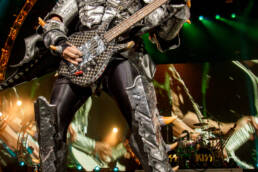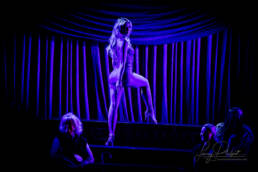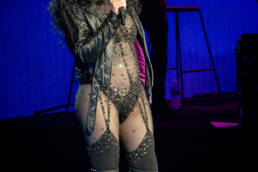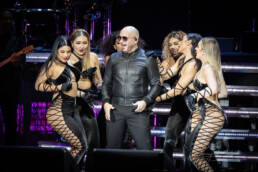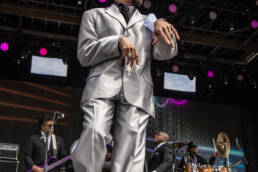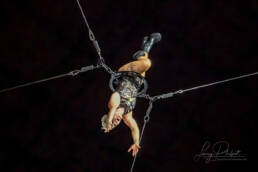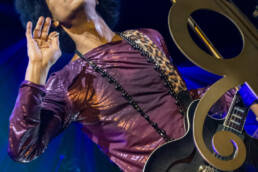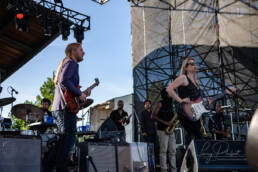Tony Bennett: The Crooner Who Conquered Time
The Voice That Found Its Calling
Step back to 1930s Queens, New York, where a young Anthony Dominick Benedetto, barely 10, stands on a stoop belting out Italian folk songs for nickels. His dad, a grocer too frail to work, hums opera at home, and his mom sews dresses to keep the lights on. The Great Depression’s grip is tight, but Tony’s voice—clear, warm, a little defiant—cuts through the gray. It’s 1944 when the real spark hits: he’s 18, drafted into World War II, singing in Army talent shows between dodging bullets in Germany. Back home, a gig at a Greenwich Village club catches Pearl Bailey’s ear, and suddenly, he’s not just a kid from Astoria—he’s Tony Bennett, a name born from a dream of making music his life. For Tony, it’s not about glory; it’s about joy, about giving a battered world something beautiful.

The Kid from Astoria: A Biography
Born August 3, 1926, in Astoria, Queens, Tony was the son of Giovanni, an immigrant grocer from Calabria, and Anna, a seamstress who raised three kids alone after Giovanni’s death when Tony was 10. Music was the family’s heartbeat—his uncle was a tap dancer, his brother an opera hopeful. Tony sang at school, doodled caricatures, and dreamed big despite the poverty pinching their heels. After the war, he studied at the American Theatre Wing on the GI Bill, honing his craft while waiting tables.
Life gave Tony love and loss. He married Patricia Beech in 1952 (two sons, Danny and Dae), but divorced in 1971. A second marriage to Sandra Grant in ’71 (daughters Joanna and Antonia) ended in 2007. Since 2007, Susan Crow, a former teacher 40 years his junior, has been his rock. At 98, Tony’s retired now, his voice stilled by Alzheimer’s since 2016, but his legacy hums on.
The Career That Spanned Decades
Tony’s career ignited in 1950 with “Because of You,” a No. 1 hit that showcased his velvet tenor. Columbia Records made him their golden boy, and 1953’s “Rags to Riches” sealed it. No bands here—Tony’s a solo act, backed by orchestras or jazz combos. His peak came with 1962’s “I Left My Heart in San Francisco,” a love letter to a city that adored him back. The ’70s tested him—rock eclipsed crooners—but he pivoted to jazz, gigging with legends like Count Basie and Bill Evans.
The ’80s brought a renaissance. His son Danny managed a comeback—MTV Unplugged in 1994 won over Gen X, and duets with k.d. lang and Amy Winehouse kept him fresh. Then came Lady Gaga. In 2011, they cut “The Lady Is a Tramp” for Duets II. Gaga, a pop chameleon with a jazz soul, clicked with Tony instantly. Their 2014 album Cheek to Cheek—a standards-packed triumph—hit No. 1, and their 2021 follow-up, Love for Sale, capped a friendship that defied generations. Gaga called him “my musical soulmate”; Tony saw her as his heir. Their 2015 tour and 2021 Radio City Music Hall shows (his last) were pure magic—her belts, his croons, a bond that rewrote the rules.
Tony’s TV resume sparkles: The Ed Sullivan Show, The Simpsons (as himself), Muppets Tonight, even a cameo in Analyze This (1999). Film? He played a mobster in The Oscar (1966). Awards? Nineteen Grammys (plus a Lifetime Achievement nod), two Emmys, and a 2001 Kennedy Center Honor. No Hall of Fame induction yet, but he’s a living legend.
The Hits That Define Him
- “I Left My Heart in San Francisco” (1962) – Written by George Cory and Douglass Cross, this Grammy-winning classic peaked at No. 19 and became Tony’s signature.
- “Rags to Riches” (1953) – Penned by Richard Adler and Jerry Ross, it hit No. 1, a rags-to-riches tale he lived.
- “The Way You Look Tonight” (1992) – Jerome Kern and Dorothy Fields’ standard, revived on MTV Unplugged, won a Grammy.
- “Body and Soul” (2011) – With Amy Winehouse, this Johnny Green classic from Duets II earned a Grammy posthumously for her.
Controversy in the Shadows
Tony’s scandals are few but sharp. In 1979, a cocaine overdose nearly killed him—found unconscious in a bathtub, he swore off drugs after. The IRS hounded him in the ’70s too, seizing his home over tax debts; he called it “my darkest hour.” His Gaga partnership raised eyebrows—some purists scoffed at the pop star pairing—but their chemistry silenced doubters. Offstage, he’s been a quiet activist, marching with Martin Luther King Jr. in ’65, a move that cost him Southern gigs but earned respect.
A Night with Gaga
Let’s linger on August 3, 2021—Tony’s 95th birthday—at Radio City Music Hall. It’s his final show, and Lady Gaga’s by his side. Alzheimer’s has dimmed his memory, but the stage lights it up. They’re midway through “Cheek to Cheek,” Tony in a tux, Gaga in a glittering gown, when he forgets a line. The crowd holds its breath. Gaga, all instinct, grabs his hand, sings his part, and spins him into a dance. He beams, ad-libbing, “You’re the best, kid!”—unscripted, raw, perfect. The 6,000 fans erupt, tears streaming. Later, during “Fly Me to the Moon,” he nails every note solo, and Gaga weeps openly backstage. It’s not just a concert—it’s a torch passed, a farewell wrapped in love. Fans still talk about it, the night Tony and Gaga proved music transcends time.
